Thing To Do
The magnificent temples of Angkor is the main draw for visitors to Siem Reap. But there is also a lot more to discover!

Angkor Archaeological Park
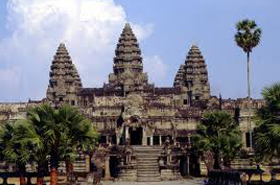
Only six km from Siem Reap lies the 400 square km large Angkor Archaeological Park. This park is the home of over 300 magnificent temple ruins from the Angkorian era, including the famous Angkor Wat, Bayon and Ta Prohm. Most of the temples were constructed between the 9th and the 12th century. And they are a truly impressive display of ancient Khmer architecture, art and civilization. Angkor was declared a UNESCO World Heritage site in 1992 – the same year it was also placed on the List of World Heritage in Danger. This is a holy place so don’t forget to cover your shoulders and knees. Touring the temples is hot and sweaty, so keep yourself well hydrated and wear light, airy and covering clothing to protect yourself from the sun. Admission fee: 1 day pass $20, 3 day pass $40 (last for 7 days), 7 day pass $60 (last for 1 month). The temple area is open for visitors between 5:00AM – 6:00PM everyday.
Landmine Museum
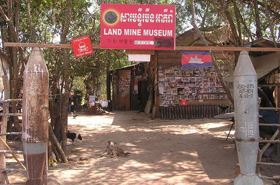
The museum has an exhibition of deactivated mines and unexploded ordinance. It also contains information about different types of mines and why they are such a big problem. Cambodia is one of the heaviest mined countries in the world. The former child soldier and founder of the museum, Akira, started to work as a deminer after the war. Today he helps his country and its people by continuing his work as a deminer. The income from the museum goes to the on-site orphanage and mine awareness campaigns. Admission fee is $1 and its open daily from 7:30 AM – 5:30 PM. The museum is located on the road to Banteay Srei, about 40 minutes from Siem Reap. The trip can easily be combined with a visit to the Angkor Park, Banteay Srei, Kbal Spean and Phnom Kulen.
The Angkor Silk Farm
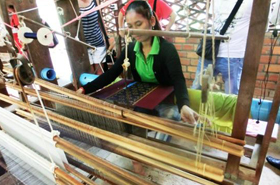
If you are looking for some of Cambodia’s finest silk products, or if you just are interested in the making of them, a visit to the Silk Farm is recommended. Here you can experience the entire chain in making silk with a free guide that will show you how mulberry trees are grown to provide feed for silkworm raising. You will observe artisans at work, removing the silk thread from the cocoons and then working the thread prior to traditional weaving. Tours can be given in Khmer, English, French and Japanese. There is also a gift shop and a cafè if you would like to buy some souvenirs or maybe a refreshing drink. The Silk Farm is located 16 km (30 minutes) west of Siem Reap, and its open between 7:00 AM and 5:00 PM. The trip can be combined with a visit to West Baray and the Sangkheum Center for Children.
Sangkheum Center for Children
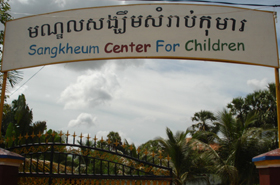
Since 2001 the Sangkheum Center for Children (‘sangkheum’ means ‘hope’ in the Khmer language) has been providing education, training, scholastic support and care to disadvantaged children in Cambodia. The center is providing a brighter future for orphaned, abused and neglected children who would otherwise be at risk of turning to a life on the streets. The Sangkheum Center for Children is a joint project between the Italian NGO Progetto Continenti and the Khmer Angkor Development Organisation. Since 2001, the center has been providing hope for over 260 children, with 48 staying in the center, while supporting another 58 children who still live in their communities and over 160 children in education and training. Take a tour to learn about the Center, the issues surrounding Cambodian children, and the activities in the villages. The center is open for visitors everyday from 7:30 AM – 5:00 PM, and it is located 10 km (20minutes) west of Siem Reap. The trip can be combined with a visit to the Silk Farm and West Baray.
Ceramic Center

The Khmer Ceramic Center is dedicated to the lost art of Khmer ceramics. Khmer ceramics once thrived during the Khmer Empire from 802 to 1432. Visit the centre and you will be fascinated by the many activities taking place here. The trainees will give you a fully guided tour with explanations and demonstrations of all stages and processes involved in turning raw clay in to a full finished, fired and glazed Khmer ceramics. You can also try your hand at the potter’s wheel, and visit the shop and the show room. The Ceramic Center is located on the main road from Siem Reap to the temples, about 5 minutes from the city center. The guided tour is free of charge, and the center is open every day from 8:00 AM – 6:00 PM.
The West Baray
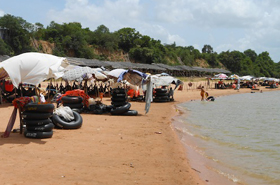
This handmade water reservoir is the only one out of four from the Angkorian era that still holds water. This makes this a very popular place for locals to hang out. Here you can have a relaxing day in a hammock, go for a swim and try some of the local BBQ food. There is also a Hindu temple on a small artificial island on the lake. The temple is included in the Angkor admission pass, and it’s easy to hire a boat to go out there. Originally, the West Baray blanketed 1760 hectares of land with an average depth of seven meters. Today, only the western two-thirds of the baray are filled with water and the average depth is about four meters. Don’t forget that this is a holy place, so if you decide to go for a swim, it’s a good idea to adjust your bathing clothes to local customs. West Baray is located 12 km (20 minutes) west of Siem Reap. The trip can be combined with a visit to the Silk Farm and the Sangkheum Center for Children.
The Happy Ranch Horse Farm
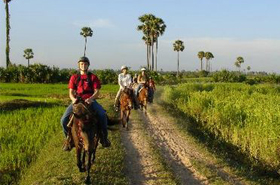
The Happy Ranch Horse Farm is the only western style horse farm in all South East Asia. The ranch is set on 10 acres of beautiful Khmer countryside, around a miniature lake. Most of the horses are pure Cambodian breed, and the ranch accommodates 29 horses, stallions, mares and foals. Riders get to explore a different side of Siem Reap. This is definitely a unique way to see Cambodia’s countryside. The local guide takes you away from the touristic areas, through countryside villages, rice fields and unvisited temples. You will get a taste of the rural Khmer life. Located only 1,5 km from the center of Siem Reap, it’s accessible by foot, bicycle, moto and tuk-tuk.
Balloon Rides
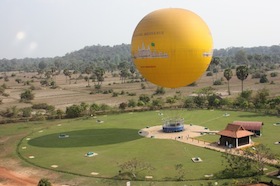
Enjoy a bird’s eye view of Angkor and its historical landmarks as you sail with the clouds and admire the majestic Angkor Wat. Angkor balloon ride gives you the best sunset and sunrise view of the temple site. Angkor balloon ride gives you a chance to rise up 200 meters above the main temples in a line attached tethered hot-air balloon. The ride takes 10 minutes and gives you a great opportunity to enjoy a very photogenic view of the temples, Siem Reap, the West Baray and the Cambodian countryside with its rice fields and villages. The balloon ride can be subjected to cancellation for safety reasons due to bad weather. There is no sunset trip in the wet season because it often rains in the evening hours in this period. The balloon has a specially designed safe platform which can lift 30 passengers at the time. The big, yellow balloon is based about one km west from Angkor Wat.
Cambodian Cultural Village
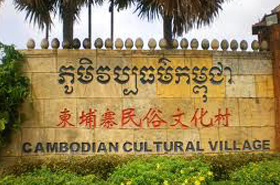
This cultural attraction opened in September 2003 and has a total area of 210 000 square meters. Its intention is to introduce visitors to Cambodian culture and history. The CCV contains a wax museum and a large park with 1/20 scale models of important cultural sites and landmarks in Cambodia. Inside the park they also have 11 unique villages, each representing different culture heritages and characteristics of different ethnic groups in Cambodia. Everyday tourist will be able to enjoy live traditional dance and music shows, Khmer boxing shows, a traditional Khmer wedding ceremony and more. There are also miniature versions of Phnom Penh’s Royal Palace and Silver Pagoda, National Museum, Central Market and Wat Phnom. The village is open from 9:00 AM – 9:00 PM and the admission fee is $12 per person with guides available for $5. Cambodian Cultural Village is located only 3 km from the city center.
Angkor National Museum
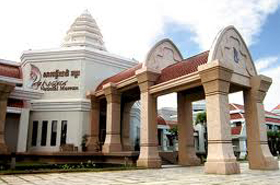
This new museum is actually a world class museum and a cultural mall combined together in one building. Angkor National Museum will take its visitors through the journey back in time from the creation to the highest point of civilization. The museum offers eight chronologically ordered galleries of angkorian era artifacts and a multimedia presentation of angkorian culture and history. The gallery of One Thousand Buddha’s exhibits one of the most prestigious collections of 1,000 Buddha statues and relics ever assembled. The cultural mall which is open to both museum visitors and the general public contains restaurants, bookshops, a souvenir shop, tourist information and a Spa and beauty center. The museum and the museum mall are open from 09:00AM – 08:00PM. Admission fee is $12 and $2 extra if you want to bring your camera. The Angkor National Museum is located in central Siem Reap.
Apsara Dancing
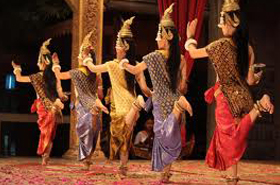
This beautiful dance has been a part of Khmer culture for well more than a millennium, during the Angkorian era it was enjoyed by kings and common folk alike. The dances are better described as dance-dramas as the dancers use stylized movements and gestures to tell a story or message. Apsara dancers are adorned with gold headdresses and silken tunics and skirts, and the costumes are highly ornate and heavily embroidered, sometimes including spangle and gems. This dance form is an important piece of Khmer cultural heritage. Like so many other Cambodian traditions, Apsara dancing was almost lost during the Khmer Rouge Regime, but got revived in the 1980’s and 90’s. Enjoy a free performance every Friday at Soria Moria Boutique Hotel by the children from the Sangkheum center. The same kids also preform every Wednesday at De La Paix Hotel. There are also several places in Siem Reap that has daily Apsara shows, including Angkor village, Grand Hotel, Kulen 2, Tonle Mekong, Amazon, Sofitel and Le Meridian
Cooking School
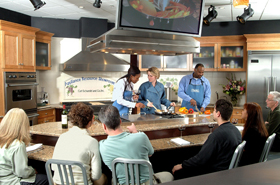
Traditional Khmer Cuisine is a delicate and healthy cuisine. Khmer recipes go back to the days before the introduction of the chili, so the food is consequently much milder than most Asian food. If you find the local Khmer cuisine delicious and are interested in learning the secrets of how to prepare and cook it, joining Le Tigre de Papiers cooking demonstration is a good idea. Your chef and teacher will take you to old market, explain everything about Cambodian vegetables, herbs, spices and other ingredients and teach you the art of Khmer Cuisine. This follows with a cooking class where you prepare your own meal using local recipes. Finally you will get to enjoy your own prepared Khmer lunch. Le Tigre de Papiers cooking school starts at 10:00 AM onwards until 04:00 PM. This all takes place in central Siem Reap.
Golf

Siem Reap has three golf courses and the Phokeetra Country Club was the first international-standard golf course. The Sofitel-managed Country Club brings world class golf to Cambodia. The course has a challenging championship layout featuring water on almost every hole. The signature hole is the 18th with double water and island green. Sweeping fairways and generous greens give the club a distinctive identity in the region. Natural lagoons and sand traps thread through the course to challenge golfers to raise their game. The course provides a good mix of tricky par 3s, individual par 4s and par 5s. Designed by D golf design and it’s a 18 hole 72 par course spread over 155 hectares. The area includes separate pitching and putting greens, driving area, pro shop and a restaurant. Phokeetra Country Club has trained English, Thai and Japanese speaking caddies that will accompany players in electric powered carts. They also provide with equipment rental, golf carts, shoes and locker room facilities. The Golf course is located 16km outside of Siem Reap.
Quad Adventure Cambodia
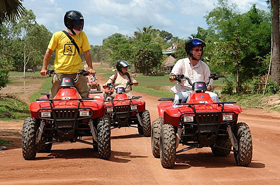
Take a trip with Quad Adventure Cambodia and explore the country side in a safe and fun way. A quad bike is the perfect all terrain vehicle, and easy to ride even for beginners. Quad Adventure Cambodia offers relaxing sunset tours and multi day adventure rides through the villages, rice paddies, temples and to more remote areas and sights. Get a real insight into this beautiful country and its friendly people. Quad Adventure Cambodia provides you with protective gear and a short introductory lesson before all trips. The prices start at $20 for a one hour trip on the rice paddies and its $150 for a full day. Their office is located in central Siem Reap.
Dirt Bike Tours
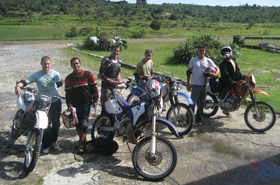
Discover Angkor, Siem Reap and what lies beyond it. There are several companies in Siem Reap that will take you out on a guided tour on the Cambodian countryside. You will be able to see a part of Cambodia most visitors never experience. In all their tours they are interested to show you the culture, the people, their way of life and the local history. The Dirt Bike Tours is very safety-oriented to ensure that their costumers have the best experience possible. Each of their tours is tailored to suit the skill level of the group. They plan trips to all areas of the country, but concentrate on the north, east, west and southwest of Siem Reap. Please ask the staff at European Guesthouse for more information.
Helicopter Tours
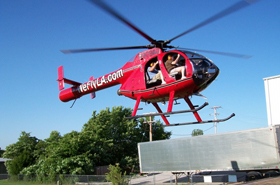
A scenic helicopter ride is definitely the most exciting and breathtaking way to experience the size, scale and enormity of the Angkor archeological park. Siem Reap has two different companies who offer flights around the main temple area or to more remote destinations. You can also take a swing out over the northern edge of Tonle Sap Lake to see the floating villages and local fishing boats from a different perspective. The tours must be booked in advance and have a minimum two people requirement. A normal tour around the temple site takes approx 12 minutes and costs $110 per person.
Pagodas & Shrines
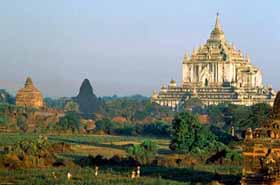
Buddhist pagodas are the traditional seat of Khmer culture. Siem Reap, like many Cambodian towns, is a collection of villages, which grew around individual pagodas, later coalescing into the town. Siem Reap has two shrines and many pagodas, but only three of them are of any interest to visitors: Both shrines are located close to Grand Hotel d’Angkor. They play an important role in the life of Cambodians, and Visitors are welcome to make offerings and take photos. Wat Bo is one of the biggest, oldest and most respected pagoda in town. The pagoda was built in the 18th century, and it contains very unique paintings and a large collection of Buddha statues. You will also be able to observe monks doing their daily routine. Wat Damnak is also a very old pagoda and houses the Centre for Khmer Studies (a public library) on its compound. Wat Thmey should be visited for its unique glass-walled stupa containing the remains of victims of the Khmer Rouge regime (killing fields of Siem Reap).


















